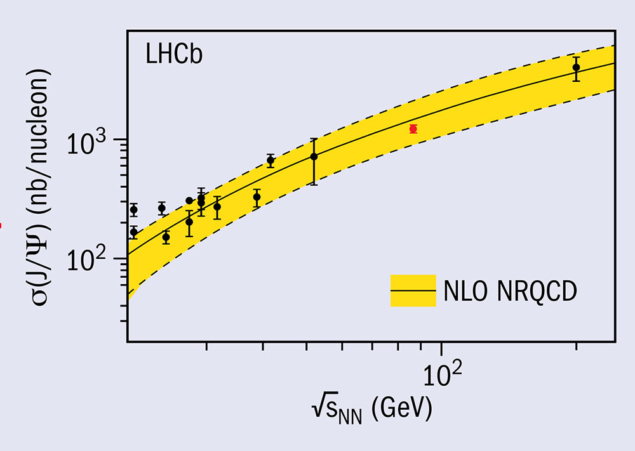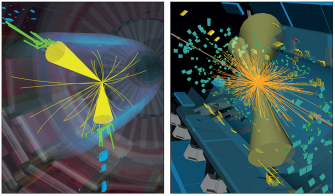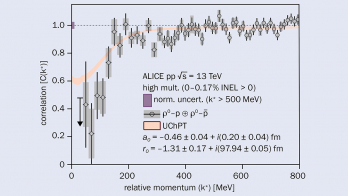
A report from the LHCb experiment
This year, the LHCb collaboration reached an important milestone in its fixed-target physics programme, publishing two key results on the production rates of particles in proton–ion collisions: measurements of the cross section of antiprotons that constrain models of cosmic rays, and of charmonium and open-charm cross sections (see further reading).
The LHCb fixed-target system, known as SMOG (System for Measuring Overlap with Gas), injects a small amount of noble gas inside the LHC beam pipe, at a pressure of the order 10–7 mbar, within the LHCb vertex detector region (CERN Courier January/February 2016 p10). This system was initially designed to improve the determination of the luminosity via beam-profile measurements, and can produce hundreds of millions of beam–gas collisions per hour. This provides a unique opportunity to exploit the LHC proton and ion beams in a fixed-target mode, opening many physics opportunities such as a precise study of the quark–gluon plasma (QGP) in the as-yet-unexplored energy regime between existing fixed-target and collider measurements.
LHCb has just taken the first step towards the use of charmonium and open-charm hadrons as probes of the QGP by measuring their cross-sections in proton–nucleus collisions, where no QGP is expected to be formed. The data for these measurements come from two SMOG data-taking campaigns with proton beams – one carried out over a period of 18 hours in 2015 with a beam of energy 6.5 TeV and an argon gas target (meaning a centre-of-mass energy per colliding nucleon–nucleon pair, √sNN, of 110.4 GeV), and the other over a period of 87 hours in 2016 with a 4 TeV beam and a helium target (√sNN = 86.6 GeV).
Thanks to the high-precision tracking and advanced particle-identification capabilities of the LHCb detector, the production rate of J/ψ and D0 mesons were measured with a very good precision (see figure). Taking advantage of the forward geometry of the detector and the boost induced by the multi-TeV proton beam, the detector also measures very backward particles in the centre-of-mass frame of the collision, giving access to the large Bjorken-x region in the target nucleon. In this kinematic region, no significant contribution from an intrinsic c c̅ component within the nucleon structure was observed.
Building on the success of these analyses of the 2015 and 2016 data, LHCb plans to carry out studies of charmonium suppression with the large sample of proton–neon collisions collected in 2017, and with samples of lead–neon collisions that will be taken in the upcoming LHC heavy-ion run in November 2018.








